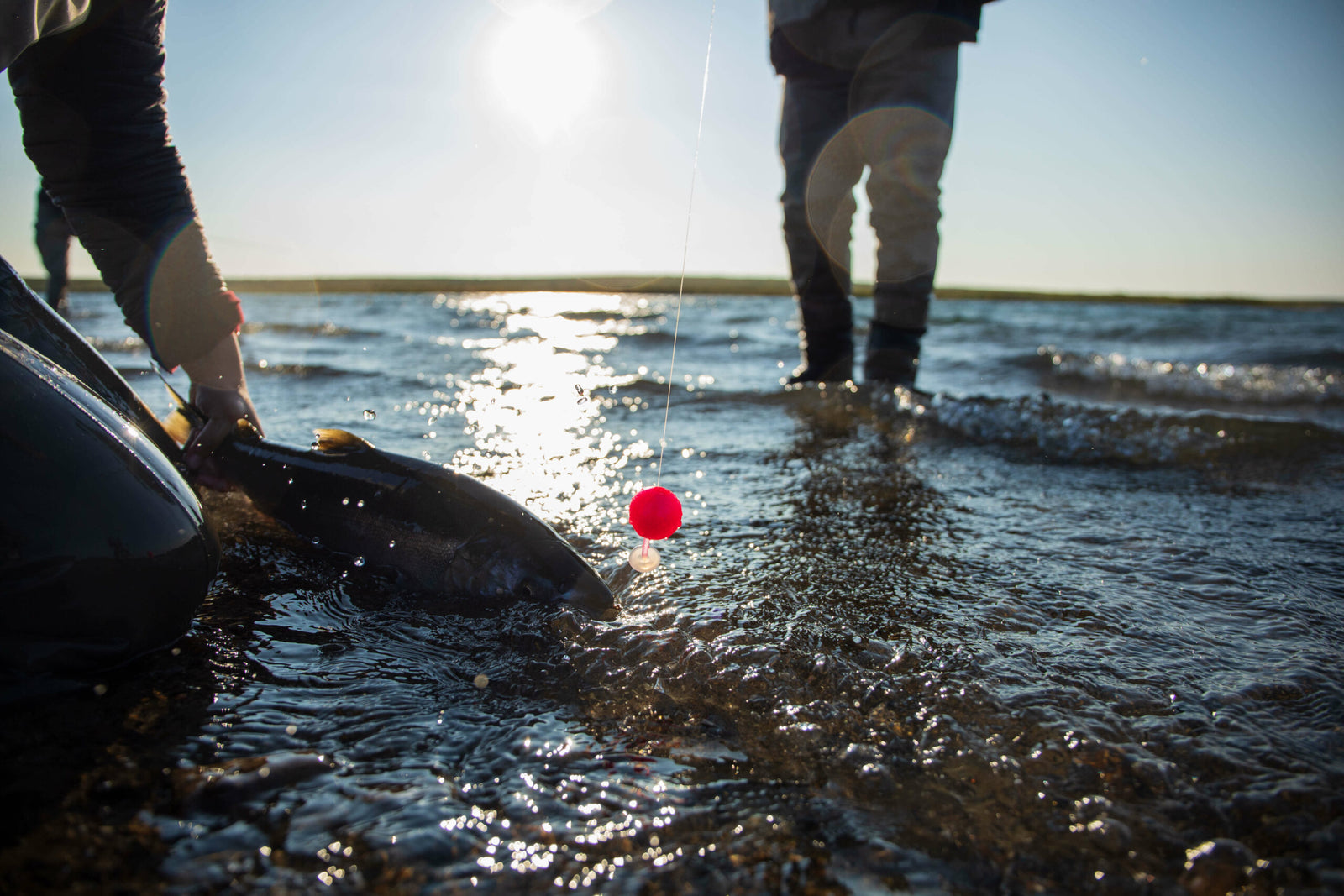Bobber Dogging or Bobber “Doggin” as it is often called is a widely employed method for targeting steelhead and salmon in medium to larger-sized rivers.
The key feature of this technique is setting the bobber stop 2 to 2.5 times the depth of the hole you are fishing. For a 6’ deep slot you would set the bobber depth between 12’ and 15’. This depth allows the weight to bounce along the bottom as the bobber floats downstream below the weight and lays in the water horizontally. The flat back of the bobbers allows for the current to push the weight and lures downstream. This technique is most effective for long sweeping runs in medium to larger-sized rivers.

Rods/Reels/Line
Standard spinning rods for bobber dogging are 9’ to 10’ in length, 8-15lb with a medium action. Due to the length of time spent mending a longer rod is beneficial. Reels are 2000 to 3000 series spinning reels capable of carrying 150 yards or more of 30 lb. braided line. Braided line is highly recommended for this technique. 30 to 50 lb. line that floats well and is easy to mend is preferred. For leaders 10 to 15 lb. monofilament is recommended. Heavier if targeting chinook.
Floats/Weights
Floats specific to bobber dogging are referred to as chopped floats. Rather than being tapered on the bottom portion of the float the “chopped” with an increase in surface area such that the floats are pushed downriver by the current. The floats need to be matched to the selected weight such that the float does not go underwater whenever the weight bounces on the bottom. Typically, medium sized bobber doggin floats are well matched with ⅓ to ½ oz weights. Preferred weights for bobber dogging are steel weights in either the round or cylinder shape. Round weights tend to bounce off the bottom as they float down the river, cylindrical weights tend to slide. The steel weight is less sticky in the bottom of the river and results in less hanging up.

Gear/Baits
A wide array of baits can be deployed while bobber doggin.
- Single bead rigs with a leader length of 3-4’.
- Double bead rigs with a length of 3-4’ to the first bead and a leader of 12 to 18” to the second bead.
- Yarnie rig with a leader of 3-4’
- Yarnie rig with a length of 3-4’ and a leader of 12 to 18” a bead
- Combinations of bait, yarnies and beads to your heart's desire.



Bites
Fish will bite a bobber doggin rig in a number of different ways. From grabbing the bait as it floats down and swimming away with it, to letting the bait go by and then turning and chasing it down. In all cases the most important thing to do when you see a bite is to reel up all the slack as quickly as possible before setting the hook. Often the act of reeling in the slack is sufficient to hook the fish.

In conclusion, bobber doggin is a very effective technique that allows you to efficiently cover a lot of water with a variety of different baits. It can be deployed for targeting salmon and steelhead in medium to large-sized rivers.
| Table 1: Bobber Doggin Options | |
| Rod Size/Type | 9’ to 10’, 8-15 lb., medium action spinning |
| Reel Size/Type | 2000 to 3000 series spinning reels capable of carrying 150 yards of braided line |
| Line | 25 to 50 lb. braided line |
| Leader Length | 3’ to 6’ |
| Leader Size |
Steelhead: 10lb to 15 lb. Salmon: 15 to 30 lb. |
| Bait Options |
|

